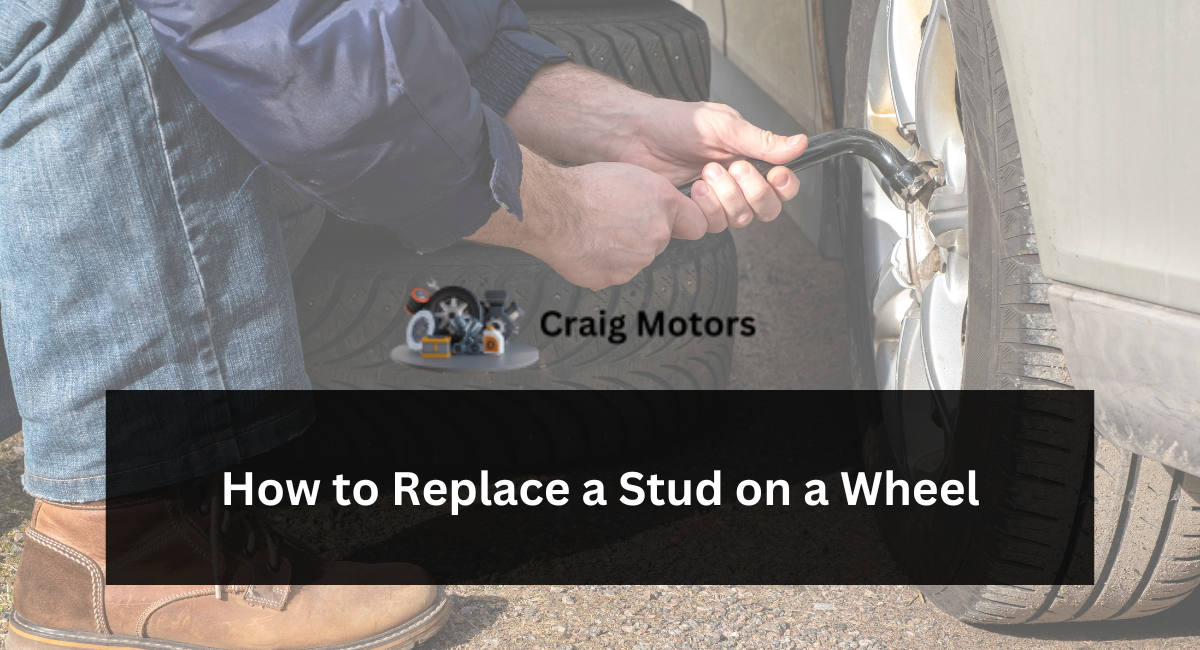Wheel studs, sometimes called lug studs, fasten the wheel to the axle or hub on your car along with lug nuts. Over time, they may corrode or fracture, necessitating replacement. Custom rims may also need longer studs compared to the original ones. You may believe that you have to bring your vehicle to a shop in order to replace the studs, but typically, you can save both money and time by doing it on your own. This is a frequently encountered task when working on an older vehicle or during the restoration of a classic car or truck.
Studs on Many Rear-wheel Drive Vehicles Expert Tip
Purchase two more lug nuts for every stud that needs to be changed. The damage caused during the installation of a replacement stud renders the lug nut useless.
Raise and stabilize the car using the frame parts. Take off the impacted wheel. If you use a lug wrench, you will need to loosen the lug nuts before lifting the vehicle.
Take out the brake drum or caliper and rotor.
Damaged studs will need to be pushed back through the flange with the hammer and punch. The stud and flange are connected by splines to prevent the stud from rotating. Once the rod removes those ridges, it will come out effortlessly. Utilize a hammer to strike a corroded stud that has a lug nut attached to it until the ridges are cleaned and the stud becomes loose.
Insert the new stud into the opening and place a spacer or few washers onto the stud. Insert the lug nut in reverse orientation until it comes into contact with the washers. Tighten the lug nut as much as possible and verify if it is securely secured. If not, take off the lug nut and put on one or two more washers, then tighten the lug nut again. Continue this procedure until the lug nut is completely tightened. Utilize a pry bar or a large screwdriver as a lever to prevent the spindle from rotating.
Wheel Stud in Need of Repair Tips
You can alter a 9/16 or 5/8-inch impact socket to serve as a spacer for installing wheel studs. This will help insert the wheel stud most of the way, but usually a few washers will still be necessary to completely secure the stud.
Disassembling Front Wheel Drive Hub Assemblies
The process is more complex for front-wheel drive vehicles, as it involves higher torque levels and hub bearings. An alteration of the wheel stud that is not acceptable is typically necessary to accommodate the bulge on the knuckle around the hub assembly, unless these components are separated. Therefore, just the removal and reinstallation of the hub assembly will be discussed here. Bring the hub assembly to a reputable shop to have the new studs installed.
Before lifting the vehicle, loosen the lug nuts and the spindle nut. If the tip of the spindle nut is staked, you might require a punch or chisel to open it. After loosening the spindle nut and lug nuts, lift and secure the car, and then take off the tire and spindle nut.
Damaged Wheel Stud
Take off the caliper and bracket. Loosen the fasteners on the supports, and lower the pivot point and connecting rod. Detach the ball joint and tie rod from the knuckle assembly. If you are able to insert the spindle into the housing, proceed to Step 4.
Connect the specialized axle puller or slide hammer to the axle using three lug nuts.
Push the sliding weight forcefully against the stop at the end of the rod until the hub bearing becomes less tight on the spindle.
Apply pressure
Apply pressure to the bottom part of the lower control arm while simultaneously lifting the knuckle to detach the ball joint stud from the steering knuckle. Then, take out the knuckle assembly from the vehicle.
After receiving the hub and knuckle assembly from the shop, which now has the new wheel studs, reassemble it by following the steps in reverse order as mentioned earlier. After tightening the spindle nut to the correct torque, which may differ depending on the vehicle, make sure to secure the spindle nut by either inserting it into the groove in the spindle or using a castle nut and cotter pin.
Steering knuckle has a square shape.
If you are experiencing noise or instability from the hub bearing, it may be more cost-effective to replace the hub assembly with one from Advance Auto Parts. You will spend a higher amount on parts, but you will save a considerable amount on work and the time that would otherwise be wasted.
Conclusion
Replacing a stud on a wheel is a manageable task with the right tools and approach. Following steps like loosening the lug nuts, removing the wheel, extracting the damaged stud, inserting the new one, and tightening it securely ensures safe and reliable operation.
Taking care during this process preserves the integrity of your vehicle’s wheel assembly, promoting optimal safety on the road. If unsure, consulting a professional ensures proper installation and maintains your vehicle’s performance.

Leave a Reply